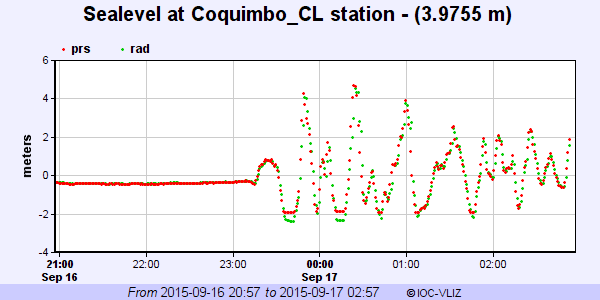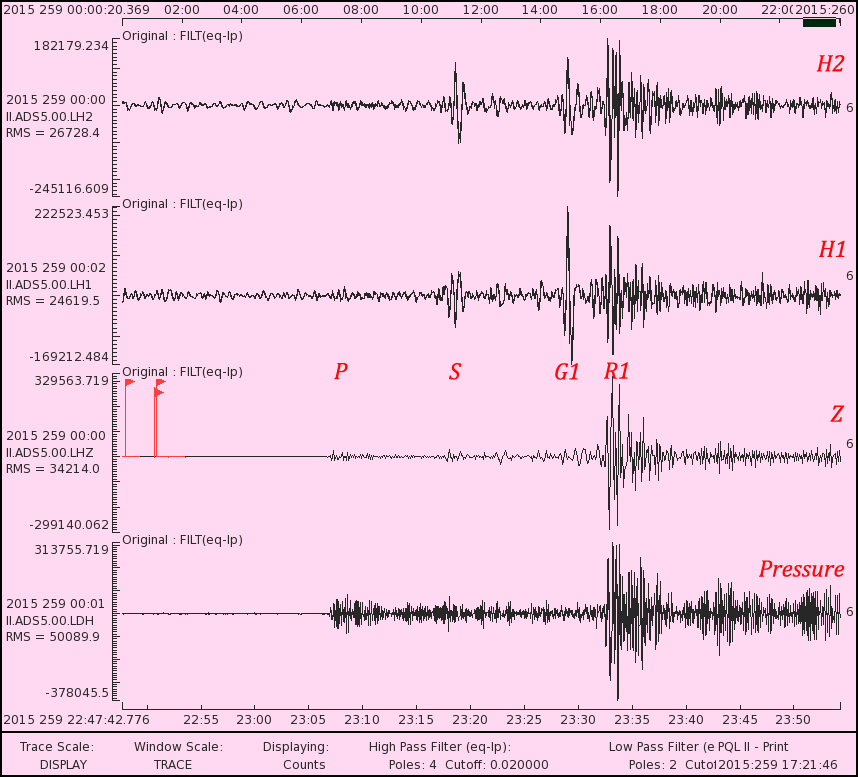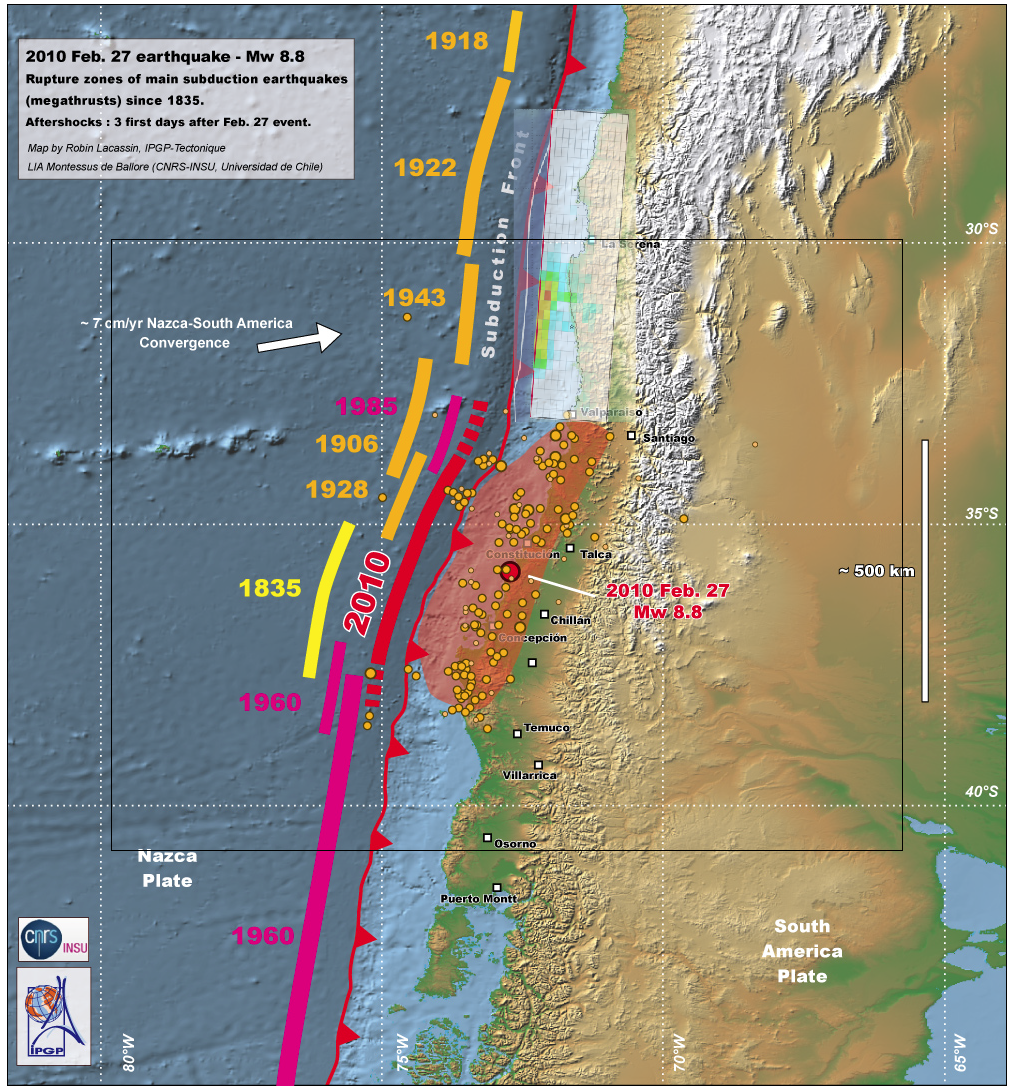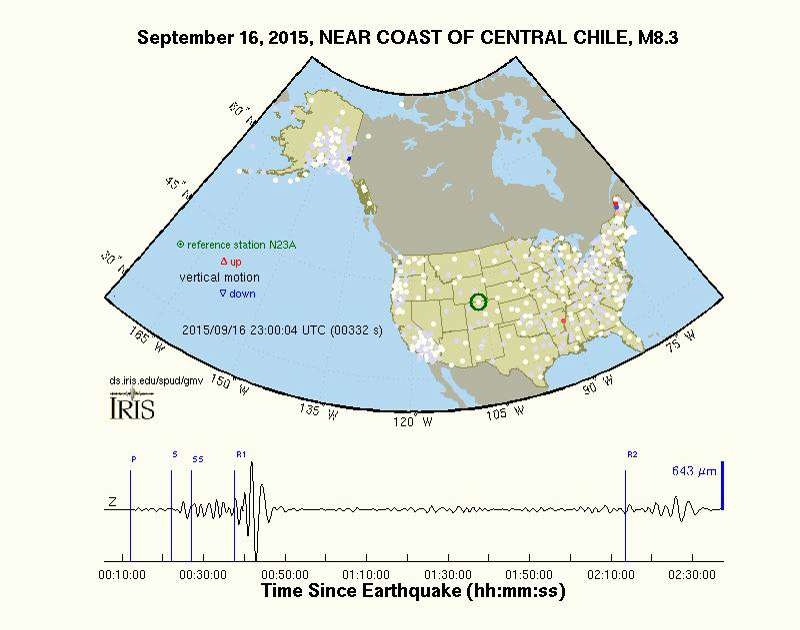This Special Event web page is intended to provide direct links to and images of data and materials available from SAGE programs and preliminary research results from the seismology community. We welcome any additional contributions containing original content that might be of interest to the research community. Please send them to the email address listed below.
SAGE does not necessarily endorse the views or scientific validity of the posted items.
September 16, 2015 M8.3 Illapel, Chile earthquake
Email contributions to:
special-events@lists.ds.iris.edu
Note:
All scientific contributions addressed to the community will be forwarded to the special-events mailing list.
If you DO NOT want your email being forwarded, please address it to SAGE or explicitly write
do not forward.
Quick Links
On September 16, 2015 an M8.3 earthquake occurred on a shallow angle thrust fault on the interface between the Nazca and South America
plates near Illapel, Chile.
This page is meant to be a collection of preliminary information, results & visualizations for the seismology research community.
Event parameters (from USGS)
Please check the USGS page for the latest official information.
| Magnitude | 8.3 |
|---|---|
| UTC Time | Wednesday, September 16, 2015 at 22:54:33 UTC |
| Location | 31.570°S, 71.654°W |
| Depth | 25km (16 miles) |
| Region | Offshore Coquimbo, Chile (135) |
| Distances | 54km (34mi) W of Illapel, Chile 76km (47mi) WNW of Salamanca, Chile 109km (68mi) NNW of La Ligua, Chile 118km (73mi) SSW of Ovalle, Chile 233km (145mi) NNW of Santiago, Chile |
USGS summary page ¶
- USGS summary page with links to PAGER
- preliminary USGS finite-fault model shows shallow rupture, large slip and long duration
- USGS moment tensors
Pacific Tsunami Warning Center page ¶
- PTWC event page (read the Message Text).
- Approximate tsunami travel times by Jascha Polet made with NOAA tool
- List of observed & forecasted tsunami heights
International Tsunami Information Center (ITIC) page ¶
IRIS Data Products ¶
- Animation showing waves propagate across US
- Fully automated backprojection results
- Aftershocks- figures & animation updated hourly
- EQ Energy – estimate of earthquake energy and rupture duration
- Record sections, P-coda stacks & station maps
- Rayleigh wave source-time function
- SeisSound – an audio/video-based data product
UNAVCO Data Products and overview page ¶
gempa GmbH simulated tsunami wave propagation ¶
Media pages ¶
Live updates from The Guardian
Background & some preliminary figures ¶




SAGE Facility Event Page
The SAGE Facility event page for this event contains links to additional tools and data.
Related Content
These other pages were tagged similarly:
- North Korea nuclear explosion [Special Event: 2013-02-12]
- Tohoku, Japan earthquake [Special Event: 2011-03-11]
- Chelyabinsk, Russia bolide (meteor) [Special Event: 2013-02-19]
- Super Typhoon Haiyan [Special Event: 2013-11-07]
- Edgefield, South Carolina [Special Event: 2014-02-15]
- Nepal [Special Event: 2015-04-25]
- Nepaltemp [Special Event: 2015-04-30]
- 2016 North Korean nuclear test [Special Event: 2016-01-05]
- South Island, New Zealand [Special Event: 2016-11-13]
- 2017 North Korean nuclear test [Special Event: 2017-09-03]







